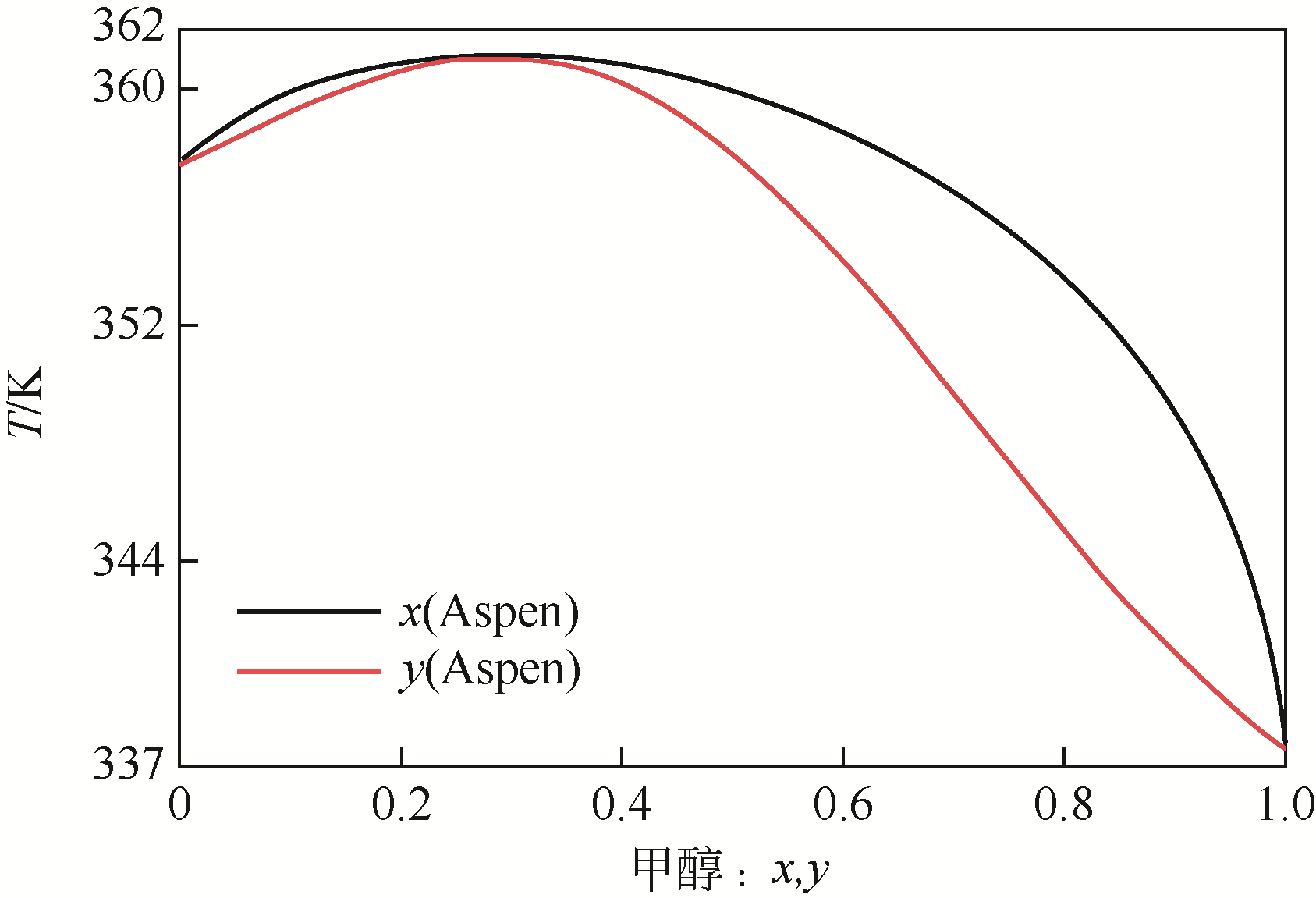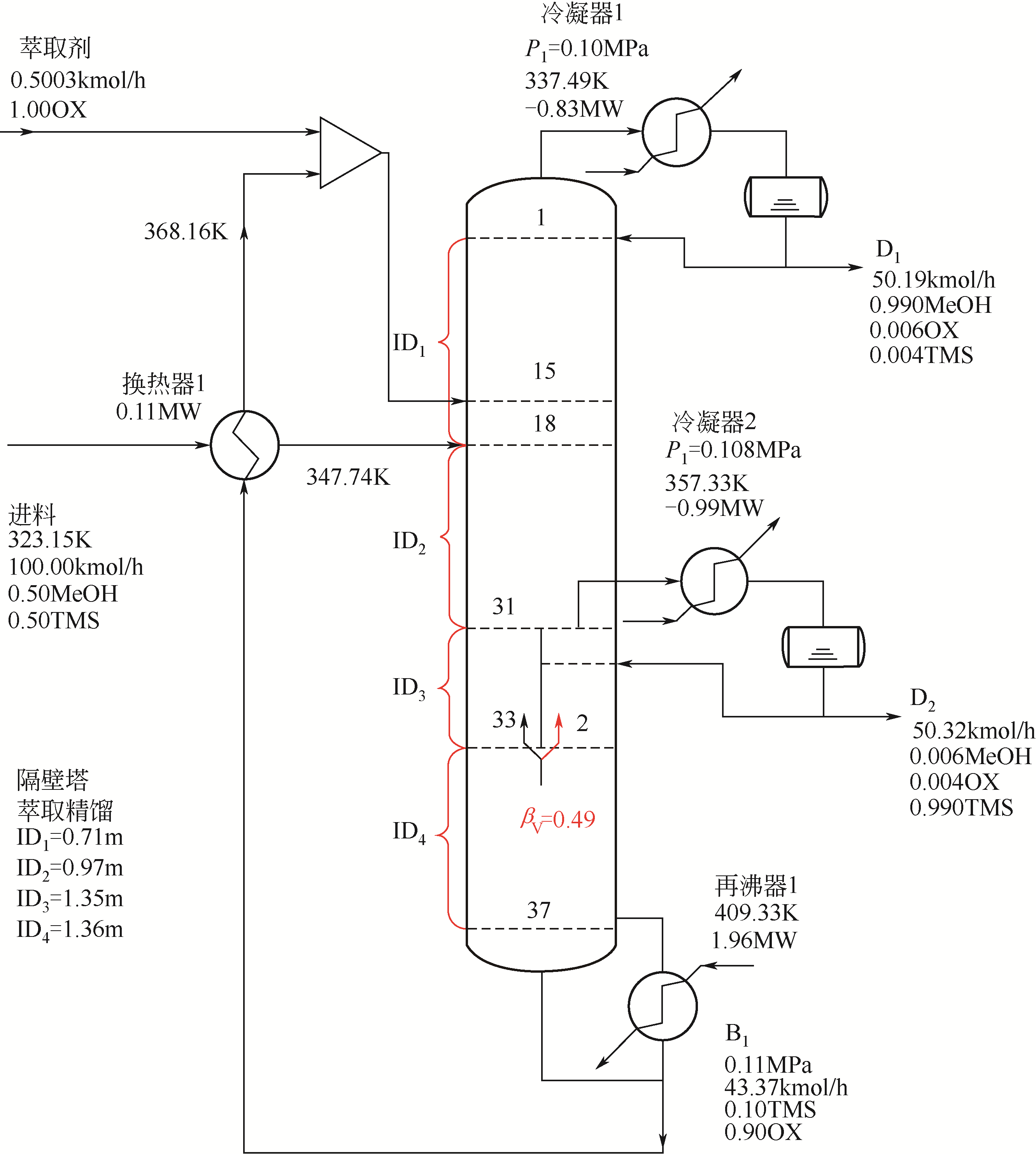| 1 |
SETO H, OGATA Y, MURAKAMI T, et al. Selective protein separation using siliceous materials with a trimethoxysilane-containing glycopolymer[J]. ACS Applied Materials & Interfaces, 2012, 4(1): 411-417.
|
| 2 |
LIU H X, ZHANG H, PENG C H, et al. UV-curable waterborne polyurethane dispersions modified with a trimethoxysilane end-capping agent and edge-hydroxylated boron nitride[J]. Journal of Coatings Technology Research, 2019, 16(5): 1479-1492.
|
| 3 |
SUZUKI E, ONO Y. Mechanism of active-site formation in copper-catalyzed synthesis of trimethoxysilane by the reaction of silicon with methanol[J]. Journal of Catalysis, 1990, 125: 390-400.
|
| 4 |
LUYBEN W L. Methanol/trimethoxysilane azeotrope separation using pressure-swing distillation[J]. Industrial & Engineering Chemistry Research, 2014, 53(13): 5590-5597.
|
| 5 |
LUYBEN W L. Pressure-swing distillation for minimum- and maximum-boiling homogeneous azeotropes[J]. Industrial & Engineering Chemistry Research, 2012, 51(33): 10881-10886.
|
| 6 |
ZHU Z Y, YU X P, MA Y X, et al. Efficient extractive distillation design for separating binary azeotrope via thermodynamic and dynamic analyses[J]. Separation and Purification Technology, 2020, 238: 116425.
|
| 7 |
张浩, 徐红, 黛昕, 等. 萃取精馏分离三甲氧基硅烷和甲醇的模拟和优化[J]. 现代化工, 2015, 35(1): 163-167.
|
|
ZHANG H, XU H, DAI X, et al. Simulation and optimization of extractive distillation for separating methanol and trimethoxysilane[J]. Modern Chemical Industry, 2015, 35(1): 163-167.
|
| 8 |
GERBAUD V, RODRIGUEZ-DONIS I, HEGELY L, et al. Review of extractive distillation. Process design, operation, optimization and control[J]. Chemical Engineering Research and Design, 2019, 141: 229-271.
|
| 9 |
YANG A, SUN S R, ESLAMIMANESH A, et al. Energy-saving investigation for diethyl carbonate synthesis through the reactive dividing wall column combining the vapor recompression heat pump or different pressure thermally coupled technique[J]. Energy, 2019, 172: 320-332.
|
| 10 |
LUYBEN W L. High-pressure versus low-pressure auxiliary condensers in distillation vapor recompression[J]. Computers and Chemical Engineering, 2019, 125: 427-433.
|
| 11 |
AURANGZEB M, JANA A K. Double-partitioned dividing wall column for a multicomponent azeotropic system[J]. Separation and Purification Technology, 2019, 219: 33-46.
|
| 17 |
PREMKUMAR R, RANGAIAH G P. Retrofitting conventional column systems to dividing-wall columns[J]. Chemical Engineering Research and Design, 2009, 87: 47-60.
|
| 18 |
YILDIRIM O, KISS A A, KENIG E Y. Dividing wall columns in chemical process industry: a review on current activities[J]. Separation and Purification Technology, 2011, 80(3): 403-417.
|
| 12 |
YANG A, JIN S M, SHEN W F, et al. Investigation of energy-saving azeotropic dividing wall column to achieve cleaner production via heat exchanger network and heat pump technique[J]. Journal of Cleaner Production, 2019, 234: 410-422.
|
| 13 |
CHEN Y X, LIU C, GENG Z F. Design and control of fully heat-integrated pressure swing distillation with a side withdrawal for separating the methanol/methyl acetate/acetaldehyde ternary mixture[J]. Chemical Engineering & Processing: Process Intensification, 2018, 123: 233-248.
|
| 14 |
AURANGZEB M, JANA A K. A novel heat integrated extractive dividing wall column for ethanol dehydration[J]. Industrial & Engineering Chemistry Research, 2019, 58(21): 9109-9117.
|
| 15 |
DEJANOVIĆ I, MATIJAŠEVIĆ L, OLUJIĆ Ž. Dividing wall column-A breakthrough towards sustainable distilling[J]. Chemical Engineering & Processing: Process Intensification, 2010, 49: 559-580.
|
| 16 |
PATRAŞCU I, BÎLDEA C S, KISS A A. Eco-efficient downstream processing of biobutanol by enhanced process intensification and integration[J]. ACS Sustainable Chemistry & Engineering, 2018, 6(4): 5452-5461.
|
| 19 |
WU Y C, HSU P H, CHIEN I L. Critical assessment of the energy-saving potential of an extractive dividing-wall column[J]. Industrial & Engineering Chemistry Research, 2013, 52: 5384-5399.
|
| 20 |
DOUGLAS J M. Conceptual design of chemical processes[M]. New York: McGraw-Hill, 1988.
|
| 21 |
Inventory index factors for 2017[EB/OL]. [2017-01-01] .
|
| 22 |
LUYBEN W L. Distillation design and control using aspen simulation[M]. 2nd ed. New York: John Wiley & Sons Inc., 2013.
|
| 23 |
SEIDER W D, LEWIN D R, SEADER J D, et al. Product and process design principles: synthesis, analysis, and evaluation[M]. 4th ed. New York: John Wiley & Sons Inc., 2017.
|
| 24 |
BEJAN A, TSATSARON G, MARAN M. Exergy analysis. thermal design and optimization[M]. New York: John Wiley & Sons Inc., 1996: 113-163.
|
| 25 |
ZHU Z Y, LI G X, YANG J W, et al. Improving the energy efficiency and production performance of the cyclohexanone ammoximation process via thermodynamics, kinetics, dynamics, and economic analyses[J]. Energy Conversion and Management, 2019, 192: 100-113.
|
| 26 |
YU M X, CUI P Z, WANG Y L, et al. Advanced exergy and exergoeconomic analysis of cascade absorption refrigeration system driven by low-grade waste heat[J]. ACS Sustainable Chemistry & Engineering, 2019, 7(19): 16843-16857.
|
| 27 |
FERNÁNDEZ J R, GARCIA S, SANZ-PÉREZ E S. CO2 capture and utilization editorial[J]. Industrial & Engineering Chemistry Research, 2020, 59(15): 6767-6772.
|
| 28 |
MA S T, SHANG X Y, LI L M, et al. Energy-saving thermally coupled ternary extractive distillation process using ionic liquids as entrainer for separating ethyl acetate-ethanol-water ternary mixture[J]. Separation and Purification Technology, 2019, 226: 337-349.
|
| 29 |
NHIEN L C, LONG N V D, KIM S Y, et al. Novel reaction-hybrid-extraction-distillation process for furfuryl alcohol production from raw bio-furfural[J]. Biochemical Engineering Journal,2019, 148: 143-151.
|
| 30 |
AUDET C, DENNIS J E. Mesh adaptive direct search algorithms for constrained optimization[J]. SIAM Journal on Optimization, 2006, 17(1): 188-217.
|
 ), TIAN Siqi1,2, FENG Zeming1,2, DONG Lichun1,2(
), TIAN Siqi1,2, FENG Zeming1,2, DONG Lichun1,2( )
)
 ), 田思琪1,2, 冯泽民1,2, 董立春1,2(
), 田思琪1,2, 冯泽民1,2, 董立春1,2( )
)






 效率η/%
效率η/%